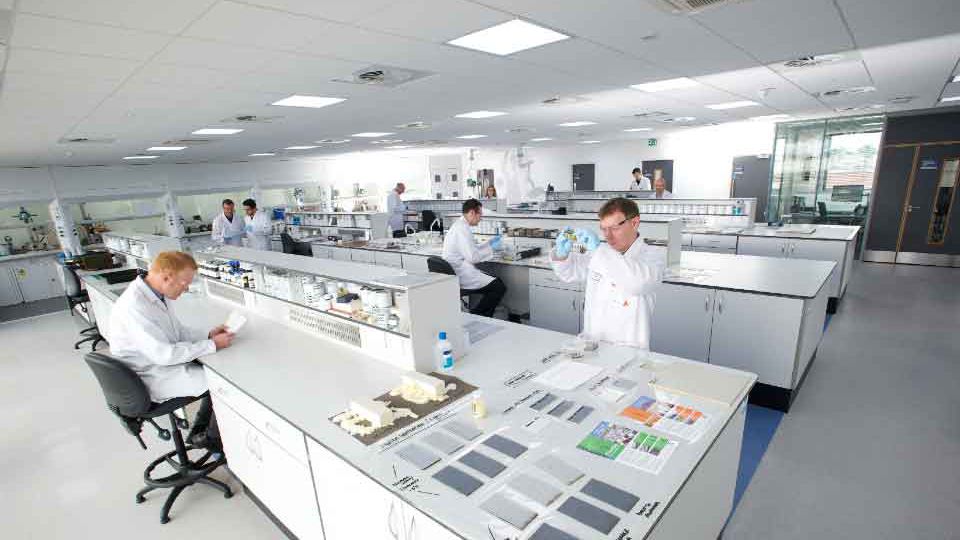Sika is keen to advance its own net-zero targets and also help its customers along this path.
Reducing Cement
Sika helps its customers reduce their carbon footprint, for example, by offering technology platforms that allow them to reducethe use of Ordinary Portland Cement (OPC). The reductionis realized most efficiently by highly specific admixtures that ease the processing and application of low-OPC products.
Other examples are concrete and mortar systems containing an increased ratio of recycled binders with Supplementary Cementitious Material (SCM), such as slags, alternative quartz-based sands, gravels, and agro-industrial wastes like cashew ash to reduce the environmental impacts of OPC. In addition, Sika’s polymer fibers as internal reinforcement of concrete enable the realization of slimmer structures with comparable strength, thus reducing the overall OPC consumption. Ecocem Materials Ltd., Ireland, and Sika have decided to intensify their more than decade-long cooperation to accelerate the design of low-carbon solutions for cementitious formulations.
Mortars to embrace circular economy
Sika has been cooperating with ADEME, the French Agency for Ecological Transition in charge of environment and energy, toreplace traditional silica sand in mortar production. Together with ADEME, Sika has been conducting a research project called “Sand” to investigate how concrete recycling waste on an industrial scale might deliver a solution not only for concrete but also for dry-mix and universal mortars. The aim is to reduce the extraction of natural silica sand and later replicate the recycling process in mortar production facilities in geographic areas with limited sand access. Furthermore, Sika has been developing new formulation routes for dry-mix mortars and directs the production process towards managing recycled and locally processed aggregates in the Sika product range.
Bio-based protective coatings
Another example of Sika’s competence in creating formulations based on alternative materials are bio-based coatings. With rising environmental concerns and increasing customer demand for sustainable products, bio-based systems will play a more significant role in the future. Sika is therefore strengthening the development of water-based protective coatings based on alternative, bio-based materials. The company has developed a new water-based platform for concrete protection coatings and processed the further development of water-borne coatings for reinforced concrete by reducing the use of fossil-based materialsand moving the formulation towards bio-based materials like sugars, ethanol, or plant oils and toward using biogas or bionaphtha from renewable feedstocks.
Packaging and product recycling to support the circular economy approach
Sika is committed to reducing the carbon footprint throughout the value chain. Part of this strategy is expanding its range of sustainable and high-performance packaging and product options. The goal is to provide customers with products and packaging that positively impact businesses and the planet. In 2022, the company focused on PCR (post consumer recycled) packaging solutions in cartridges, buckets, wrap foil,and application nozzles. Furthermore, the Sika post-consumer recycling program recycles millions of square feet of used membranes yearly that would have otherwise gone to landfills. Sika also reduces waste at every step of the product life cycle, converting more than 98% of scrap materials from manufacturingand installation into new roofing and waterproofing membranes.

